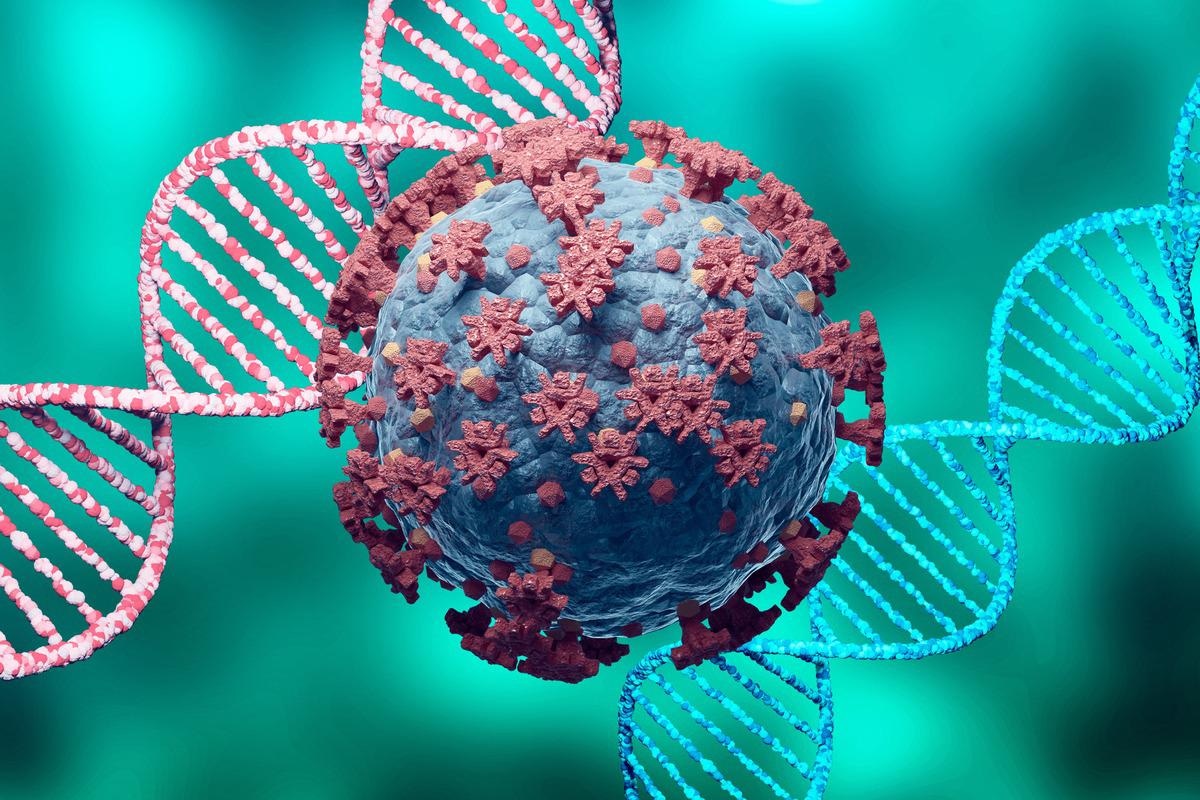A group of scientists has claimed that coronavirus disease 2019 (COVID-19) severity depends on the method of exposure, the pathogenicity of the causal agent, and host susceptibility and its response to the pathogen.
 Study: SARS-CoV-2 genome-based severity predictions correspond to lower qPCR values and higher viral load. Image Credit: Adao/Shutterstock
Study: SARS-CoV-2 genome-based severity predictions correspond to lower qPCR values and higher viral load. Image Credit: Adao/Shutterstock
However, the current COVID-19 pandemic, caused by the rapid outbreak of severe acute respiratory syndrome coronavirus-2 (SARS-CoV-2), has shown considerable diversity in both the host and virus with a wide spectrum of clinical outcomes.
Background
Previously, the severity of the disease was largely linked with the host phenotype, e.g., gender, age, blood group, etc. This pandemic has shown that geographic region, viral mutations, and host genetic susceptibility have a significant role in severe clinical outcomes.
To predict the severity of the disease experienced by an individual, scientists have used computational models based on phenotypic, genetic, and demographic data.
The main aim of these models is to tailor the best treatment for a SARS-CoV-2 infected patient. Early prediction of the degree of severity of the disease can help preserve life and health.
Scientists stated that real-time PCR data with increased cycle thresholds could be linked with a 9% reduction in the odds of in-hospital mortality. They further revealed patients with a cycle threshold below 23 were 3.9 times more likely of in-hospital mortality than patients whose cycle thresholds were above 33.
Prior studies revealed that although the use of PCR cycle thresholds is an effective predictor of COVID-19 outcome, it cannot discriminate between the varying levels of severity of the disease.
Scientists used SARS-CoV-2 genome-wide sequencing to identify newly emerged variants. Some of the variants have been classified as variants of concern, owing to their greater virulence, transmissibility, and evasion of vaccine or natural infection-induced immune response. These variants have emerged owing to mutation at the spike sequence and other parts of the virus genome.
A group of researchers have used these SARS-CoV-2 sequence data and developed an algorithm to predict severity based upon viral mutations.
They also identified seventeen variants associated with severe clinical outcomes, and sixty-seven variants were associated with mild clinical symptoms. This report showed the discriminative ability for classifying severe patients by conducting an area under the curve analysis. Researchers recently focused on assessing if a genome-based predictive algorithm developed to predict clinical severity could also predict polymerase chain reaction (PCR) results as a surrogate for determining viral load and severity.
This study is available on the medRxiv* preprint server.
About the study
The current study has comprehensively validated predictions from machine learning models and has established its credibility via powerful analytical tools to predict disease severity. Scientists are positive that their results would help clinicians determine a tailored treatment line for a particular patient. The current study used an outgroup sample containing an orthogonal severity marker that supported the algorithm, which can identify virus strains that are biologically unique and present significant clinical differences.
A previous study associated with the Middle East respiratory syndrome (MERS) virus reported that viral load is strongly connected with the possibility of severe infection and death. This study also stated that a drop in the cycle threshold value increases mortality risk by 17%.
However, this study failed to include factors such as the correlation between age, viral load, and disease severity. At present, if a cycle threshold value is less than 20, the individual is considered to be “highly infective.”
Researchers used the previously published algorithm used to compare the viral genome-based severity predictions to clinically-derive PCR-based viral loads of 716 viral genomes. The samples that represented severe COVID-19 outcomes had an average cycle threshold of 18.3. Further, those with mild symptoms had an average cycle threshold of 20.4. The current study projected a significant correlation between predicted severity probability and cycle threshold.
Conclusion
This study had some limitations that included using the PCR cycle threshold as a surrogate for clinical severity. However, the PCR test can only fairly predict the clinical outcome and is not an ideal measure.
Another limitation of the study concerned the small number of viral genotypes.
Despite these limitations, the study showed that a genome-based algorithm could be linked with the clinical diagnostic test metrics, which could predict COVID-19 severity.
Researchers revealed that viral genetic information and patients’ demographics could help clinicians determine suitable COVID-19 treatment for an infected individual.
Further, SARS-CoV-2 sequence data along with in silico-derived severity markers could help design vaccines for new variants.
This study also stated that genomic surveillance could help identify new viral strains with epidemic potential and, thereby, provide health officials with enough time to prepare a strategy to contain transmission.
*Important notice
medRxiv publishes preliminary scientific reports that are not peer-reviewed and, therefore, should not be regarded as conclusive, guide clinical practice/health-related behavior, or treated as established information.
Skarzynski, M. et al. (2021) SARS-CoV-2 genome-based severity predictions correspond to lower qPCR values and higher viral load. medRxiv. doi: https://doi.org/10.1101/2021.11.22.21266688 https://www.medrxiv.org/content/10.1101/2021.11.22.21266688v1
Posted in: Medical Science News | Medical Research News | Disease/Infection News
Tags: Blood, Coronavirus, Coronavirus Disease COVID-19, Diagnostic, Genetic, Genetic Information, Genome, Genomic, Hospital, Immune Response, Machine Learning, Mortality, Mutation, Pandemic, Pathogen, Phenotype, Polymerase, Polymerase Chain Reaction, Respiratory, SARS, SARS-CoV-2, Severe Acute Respiratory, Severe Acute Respiratory Syndrome, Syndrome, Vaccine, Virus

Written by
Dr. Priyom Bose
Priyom holds a Ph.D. in Plant Biology and Biotechnology from the University of Madras, India. She is an active researcher and an experienced science writer. Priyom has also co-authored several original research articles that have been published in reputed peer-reviewed journals. She is also an avid reader and an amateur photographer.
Source: Read Full Article
